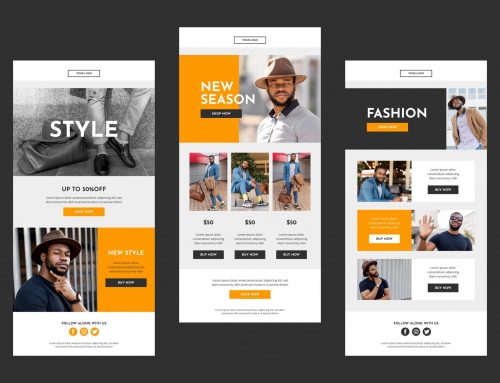5 Challenges Designers Face
The design world is based around finding solutions to challenges. Graphic designers face challenges everyday, not only in their specific projects and working with clients, but they also face challenges with the industry and with themselves. Here are 5 major challenges every designer faces on a daily basis, and tips on how to approach these challenges head on.
1. Working With Tight Deadlines
Some people work well under pressure, while others struggle. If you’re a designer, you naturally learn to work quickly, for a few reasons. First, the more you learn the programs and consistently work with them, the programs will become second nature and you will naturally move quickly. And if you’re a freelancer, the quicker you move, the more projects you can work on, and ultimately end up generating more revenue and expanding your network of clients. Additionally, your ability to work with strict deadlines will keep your clients impressed and asking you for more work!
However, working quickly should not mean compromising good design. You should still put in all of your effort to your projects, no matter the deadline.
2. Balance of Design & Function
Designers have a passion for creating innovative and visually appealing projects, but designers also need to be able to make designs that are functional. Here are some things to keep in mind for making sure your design has depth and is functional:
Color
Colors can elicit different feelings or meanings, make sure the colors in your design coincide with the project you’re working on. When it comes to color, think about these things when working on your next project:
- Pantones
- Brightness/saturation
- Contrast
- Color theory
- Color in a cultural context
Typography
Pick the right font for the project you’re working on. Just like colors, fonts can also elicit certain moods and feelings. Here is a brief list of typography items to think about when working on your next project:
- Choice of font
- Font size
- Font weight
- Leading & kerning
- Orientation
- Strokes, underlines, drop shadows, and other effects
Informational / Stylistic Elements
Think about the project at hand – it probably requires some sort of element to organize the layout of your project and make it understandable for a viewer. Take these elements into consideration when working on your next project:
- Icons
- Charts
- Infographics
- Separating lines
- Text inside of shapes (squares, circles, arrows)
Designers can use these elements to help solve the problem of design with function.
3. Balance of Client Needs & Personal Design Preferences
As designers, we often are partial to what we design, and have a personal style. When working with a client, it’s important to balance your own personal style with what the client is looking for. Remember, a great designer is also a great collaborator. It’s important to be able to show a client you can design what they envisioned, but it’s also important to be able to show a client your own perspective on the project and show some of your own original ideas!
4. Staying Relevant & Gaining Skills Constantly
Staying Relevant
The creative world is always changing, and constantly evolving. Not only is it a challenge to stay at the top of design trends, it is also an interpersonal challenge to constantly push your own creative talents to the next level. It is important to keep yourself up-to-date with the latest trends, color schemes, creative tools, new techniques, etc. Staying relevant is the key to success in the creative industry. Here are a couple extra tips to staying relevant:
- Find a blog you enjoy and follow it
- Go to seminars that talk about topics you’re passionate about
- OR… go to seminars that you want to learn more about
- Watch tutorials online
- Start your own blog
- Join a networking group
Gaining Skills Constantly
As technology evolves and design trends change, our methods for design are ever changing. New tools and programs become available to us all the time, and updates for all of our programs are constantly coming out as well. Designers definitely face the challenge of constant education, and self-education at that. The more skills you have and the more up-to-date you are with new trends, programs, and design methods, the more marketable and valuable you become as a designer. The more you know about different facets of design, the more projects you can work on.
However, this does not mean you should try to just become a master of none. Definitely try and specialize in something to make yourself unique. However, don’t limit yourself to one particular facet of design.
Graphic designers are becoming more and more common to find. The design industry is constantly gaining more creatives. All designers face challenges – it’s our job to find solutions in a creative way. Working with tight deadlines, balancing design and function, balancing personal style with client preferences, staying relevant, being unique, and gaining skill constantly are some major challenges designers face everyday. In order to succeed, designers must be able to face those challenges head on. Remember, as fast-paced and competitive as this industry may be, quality of design and providing second-mile service can truly make you successful.
5. Being Unique
As important as it is to understand design trends and get inspiration from admirable designers, it is just as important to stay true to yourself. When working on a new project, research and inspiration are a huge part in jumpstarting the project. However, plagiarism is never the answer – even outside of the design industry. As designers we’re creative, so we should have something that makes us unique; whether it’s a design style, a certain program we’ve mastered, a certain type of design project we’re exceptionally talented at, or even our perspective on design. Sure, it’s important to keep up on design trends, but it’s also important to take those trends and make your own unique spin on them. That’s what makes a great designer stand out from the crowd.
Need a quality design team for your next project? Contact us at ocreations. We’re a creative team that specializes in traditional marketing and distinctive conceptual design. With real-world brand development and expertise, extensive graphic design and teaching experience, we help organizations build their brand and their business by delivering timeless and transformative design.







